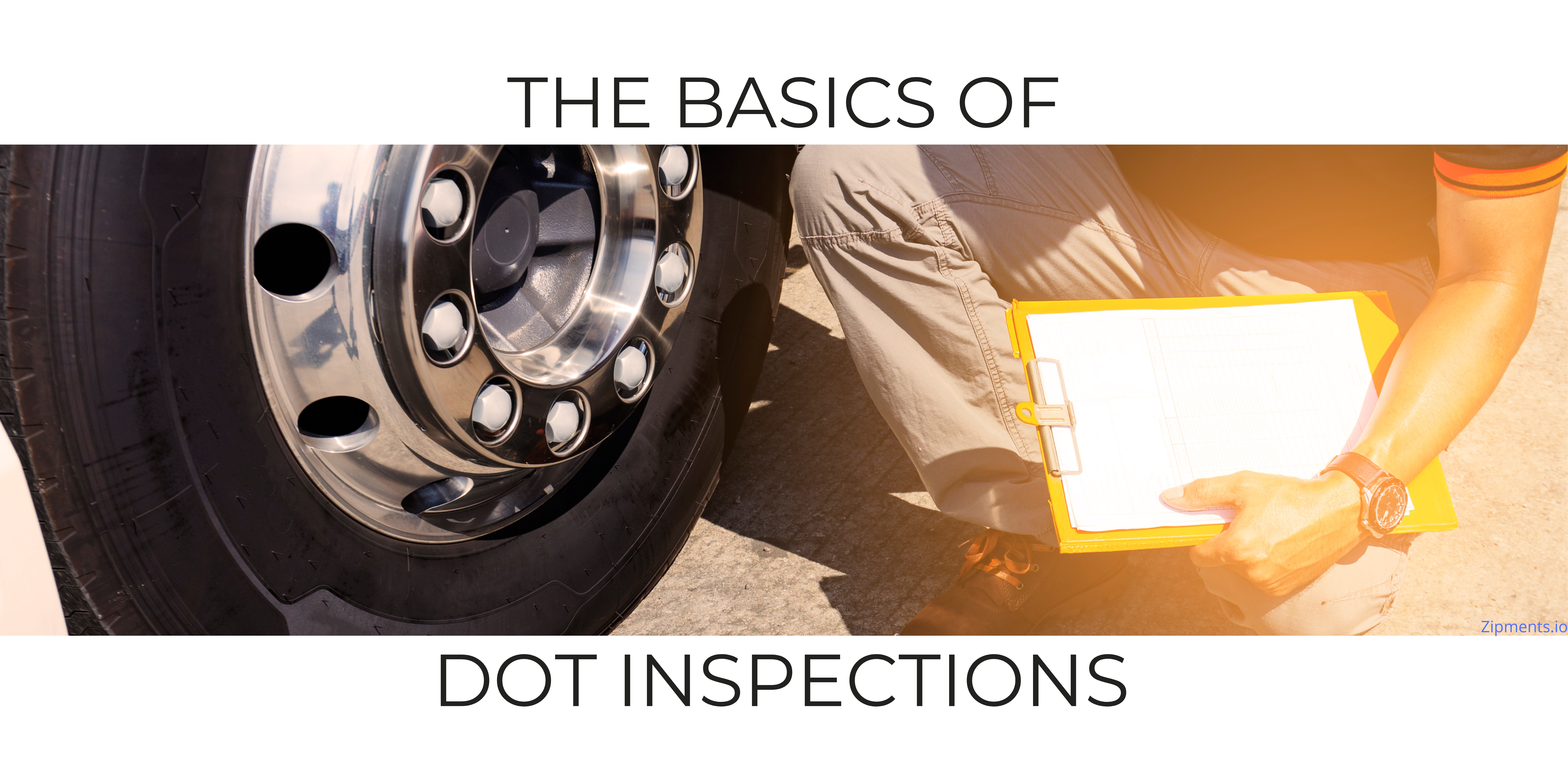No matter what lanes you run, no matter how old your truck is; every driver will get a roadside...
DOT Inspections: The Process and How to Prepare
If you're a truck driver, you're probably familiar with the U.S. Department of Transportation's (DOT) safety inspections. Though there are different levels to them, you've probably been through enough in the past and know the basics. However, being aware of the specifics of each inspection level, or the most common violations, can help you save a lot of time and money in the long run. DOT inspections are a fact of life for truck drivers, and while the process may seem daunting at first, it’s actually quite simple.

Inspections occur in 3 settings: pre-trip, post-trip and roadside. Each level checks for compliance with safety regulations for commercial motor vehicles (CMVs).
Pre-Trip Inspection: This inspection is required before every trip begins to ensure things are working properly. This is a detailed check inside out of your truck. It includes everything from checking your vehicle’s lights, to windshield wipers, emergency equipment, brakes, tires and wheels for proper wear and safety standards compliance. Drivers must also ensure their vehicle has an operational horn, fire extinguisher and first aid kit. Failure to comply with these requirements could lead to fines or even suspension of your CDL.
Post-Trip Inspection: This inspection is required after each trip ends to ensure that all parts and components are in good working condition prior to the next trip beginning, and it is similar to the pre-trip inspection. It includes checking tire pressure, brakes and lights again as well as any mechanical issues that may have developed over time such as loose screws or bolts that could fall off onto the road during travel.
Roadside Inspection: These are usually the most frustrating. A state trooper or DOT officer can pull you over anywhere, without reason required, including weigh stations, a truck stop or side of a highway. They will be looking at your mannerisms/behavior, as well as your truck, so stay calm and professional. Keep your cab clean and documents organized and nearby. Your trailer attachment, having a spare tire, log book and other parts of your truck will also be checked.
There are 6 levels to the types of inspections done by DOT. The inspection level you get will vary:
Level 1: North American Standard Inspection
- The most detailed one from checking if you are wearing your seatbelt to your entire vehicle. Officers will look at the entire truck and trailer for any worn out parts or damage. They also look at the braking system, tires, lights, battery, cargo (how it’s secured) and other areas. This is the most common level, and the one usually performed.
Level 2: Walk-Around Driver/Vehicle Inspection
- Similar to the first level, officers walk around your vehicle, but this time they won’t look under the vehicle. Your paperwork and credentials will still be checked.
Level 3: Driver-Only Inspection
- This inspection focuses on the driver. This is where your log book and license will be checked along with RODS, HOS and DVIR.
Level 4: Special Inspections
- These are usually rare inspections and they are conducted on one part of the vehicle or the driver, such as examining in greater detail your documents or vehicle part.
Level 5: Vehicle-Only Inspection
- This is a similar inspection to level 1 but the driver is not present for this one. Often we find these during compliance reviews at the carrier location.
Level 6: Enhanced NAS Inspection for Radioactive Shipments
- These are special inspections involving vehicles which may transport hazardous materials or medical waste or nuclear material.
What Happens if Violations are Found?
If violations are found during your inspection and they are minor, they may affect your CSA score. You have about 15 days to fix the issues found, and the carrier has to send a signed report to FMCSA to declare all repairs are completed. For serious violations, you are placed on OOS (out of service), and not allowed to operate until violations are corrected and documented properly.
Keep in mind that not only DOT officers conduct inspections. State troopers also have authority to perform these inspections. Two other groups are also present in this process behind the scenes: The Federal Motor Carrier Safety Administration (FMCSA) is under the DOT and oversees the inspections. They work alongside the Commercial Vehicle Safety Alliance (CVSA), a nonprofit focusing on safety, as they created the criteria for the North American Standard Inspection program.
So what happens next?
When a DOT officer or state trooper pulls you over, be prepared for them to begin assessing your vehicles overall condition. From there, they may ask for your CDL and insurance. You will then be asked to exit your vehicle as they walk around and inspect it. You may then be asked to open your doors, or other areas to ensure the inside of the truck is good. If all is well, you will be asked back into your truck to retrieve your log books.
Word of Advice: Among the most common violations against drivers are logging violations, exceeding HOS and no medical card or expired medical card. Be sure to stay on top of your documents and logs!
Now that you have been briefed on all the details officers may look for, you are ready to hit the road! Use any inspections you undergo as a learning experience, and with time they will become easier to deal with and complete. They exist to make you a safer driver, and to keep you safe by keeping your vehicle in check. So take your time, and enjoy the drive!

-1.png?height=200&name=Brown%20Simple%20Tips%20Shoot%20Blog%20Banner%20(19)-1.png)
.png?height=200&name=Brown%20Modern%20Simple%20Podcast%20Blog%20Banner%20(5).png)
.png?height=200&name=Zipments.io%20(11).png)